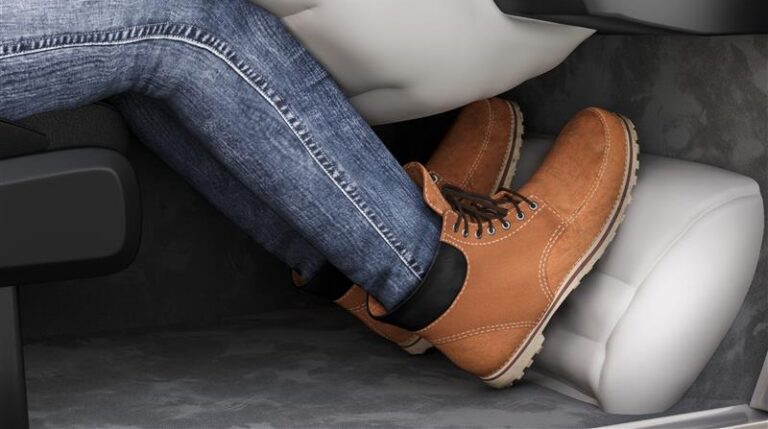The new Active Heel Airbag technology from ZF Lifetec addresses safety concerns in future vehicles where seats may be positioned farther from the footwell. It ensures a stable heel impact point – even when seats are pushed back. The company states that without the Active Heel Airbag, the risk of serious leg and foot injuries in an accident greatly increases.
As seats move further back into ‘comfort positions’ in future vehicles, the footwell may become too distant to provide proper support. In an accident, this could lead to uncontrolled leg movement, increasing the risk of lower extremity injuries. While many of these injuries are not life-threatening, they can cause long-term musculoskeletal damage for both the driver and front passenger.
In a crash, the Active Heel Airbag inflates beneath the vehicle’s floor carpet. On the driver’s side, by integrating the pedals, the airbag creates a smooth, uniform surface for the heel in the event of a crash. This helps prevent foot injuries caused by twisting upon impact with an edge, such as the brake pedal.
“If the heel strike point is missing, the knees cannot be effectively deployed into the airbag and the knee airbag is less effective. The Active Heel Airbag helps to ensure an adequate heel impact point even in more comfortable seating positions,” said Harald Lutz, head of development at ZF Lifetec.
In a conventional seating position, the vehicle floor provides sufficient support for front-seat occupants’ feet, ensuring a stable heel strike point. This stability also enables a controlled knee path and ensures that, if the vehicle has a knee airbag, the knee joint makes contact at the most favorable angle. With the heel securely supported in the footwell, a significant portion of crash energy can be transferred through the femur – the body’s strongest bone – into the vehicle structure.
However, crash tests have shown that when an occupant moves their seat back into a more comfortable position, the increased distance between the heels and the impact point weakens the connection to the footwell. To maintain proper support, an additional heel impact point is needed.
The Active Heel Airbag can be integrated into the footwell without requiring extra space in both the passenger and driver sides, and will be available for installation in vehicles in 2028.
On the driver’s side, it can be activated either by a comfort position button or through camera-based interior monitoring, such as during assisted driving.



